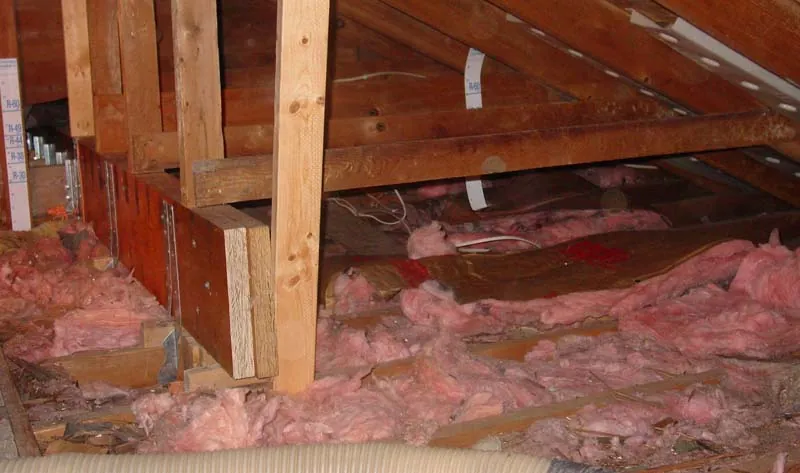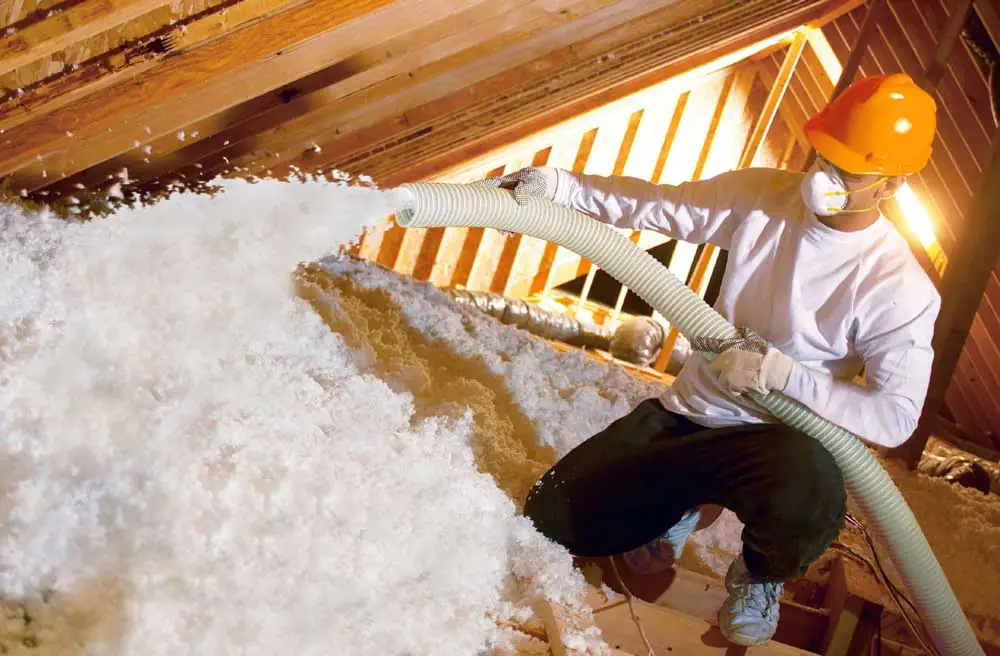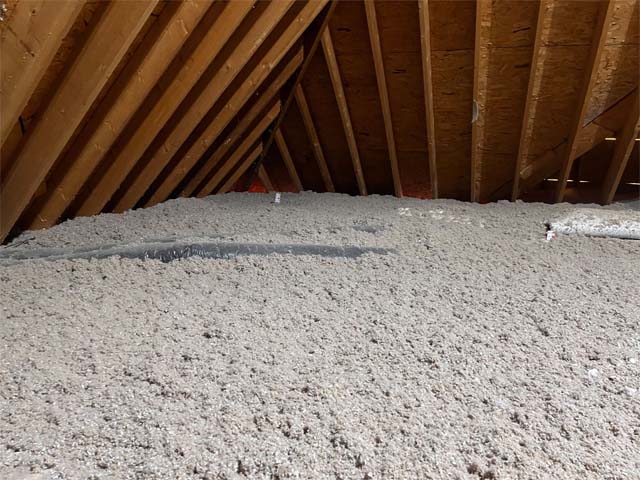When it comes to keeping your home comfortable year-round, your attic plays a bigger role than you might think. You may wonder how it makes sense to insulate your attic to trap heat while also installing vents that let cold air in. It sounds like a contradiction, but it’s not. In fact, both attic insulation and attic ventilation are essential for building a durable, energy-efficient home, especially in Virginia.
Our state’s climate gives us both hot, humid summers and chilly winters. That means your home needs to stay warm in January, cool in July, and dry all year long. This guide explains how insulation and ventilation work together to protect your attic space—and your entire house.
Why Attic Insulation Matters in Virginia

Think of attic insulation as a giant thermal blanket that slows the transfer of heat. It helps lower your heating and cooling costs by keeping your home warmer in the winter and cooler in the summer. That’s key in a humid state like ours. Yet, 90% of U.S. homes are under-insulated by today’s standards.
Virginia building codes require a minimum R-value of insulation in all new homes, depending on their climate zone. Virginia falls within climate zones 3, 4A, and 5. Attics in zone 3 need a minimum insulation R-value of R-49, while colder zones 4A and 5 require R-60. Refer to the official state code for the most accurate and up-to-date insulation requirements.
Benefits of Upgrading Attic Insulation
Save Energy & Money
Insulation helps reduce heat loss in winter and slows indoor heat buildup during the summer. That means your HVAC system doesn’t have to work as hard, and your utility bills go down.
Improve Year-Round Comfort
Insulation keeps your home’s rooms consistently warm or cool, depending on the season. Combined with air sealing, it helps reduce drafts and keeps temperatures steady throughout your living space.
Protect Your Home
In winter, proper insulation and ventilation help prevent damaging ice dams by keeping your attic temperatures lower. In summer, it helps extend the life of your roof shingles by limiting excessive heat buildup in your attic.
Why Attic Ventilation Matters

Let’s explore the importance of attic ventilation. While insulation traps heat where you want it, ventilation helps remove what you don’t: hot air, moist air, and humidity. Without a properly ventilated attic, moisture can get trapped. This can lead to mold, wood rot, and less effective insulation.
Virginia’s building code requires cross-ventilation in enclosed attic spaces. Installing ridge vents (at the top of the roof) and soffit vents (under the eaves) is a popular and effective way to let hot, humid air escape and keep air flowing. A good rule of thumb is to install one square foot of vent opening for every 150 square feet of attic floor space.
Key Benefits of Proper Attic Ventilation
Moisture Control
Good ventilation prevents moisture buildup by pulling humid air and condensation out of your attic. This protects your insulation and wood framing from mold and decay. Wet insulation loses its R-value and effectiveness if it accumulates moisture.
Temperature Regulation
In winter, ventilation keeps your attic space cool, which reduces the potential for ice damming. In summer, it vents hot air to prevent your attic from overheating. It also protects your shingles from excessive heat.
Extended Roof & Insulation Life
As ventilation removes the excess heat and moisture from your attic, it safeguards your roof’s structure and helps any damp insulation completely dry out.
How Ventilation and Insulation Work Together
Ventilation and insulation make a great team. They work best when working together. They have an incredible synergy where insulation slows the movement of heat while ventilation removes moisture and unwanted hot air. Together, they create the perfect balance for your attic. (Air sealing is another valuable part of the team that works with insulation and ventilation to protect your attic.)
Scenario Comparisons

Insulation Without Ventilation
A well-insulated but poorly ventilated attic will trap warm, moist air inside. This can lead to condensation, mold, mildew, and even wood rot over time. Insulation that remains damp loses its effectiveness quickly. Virginia’s high humidity makes this scenario a serious concern.
Ventilation Without Insulation
What happens if you have plenty of vents but not enough insulation? In this scenario, your attic space would remain close to the outdoor temperature throughout the year. That means higher heating and cooling costs and a less comfortable home for you and your family.
Both Insulation AND Ventilation
Installing both insulation and ventilation is the best-case scenario for every Virginia homeowner. You will achieve optimal attic conditions during every time of year. In the winter, your insulation helps keep heat in your living areas while your vents keep your attic cold and dry. During the summer months, your vents purge hot air while your insulation helps block incoming heat.
Critical Installation Requirements
There are many important parts of proper insulation and ventilation installation. Never cover or block your soffit vents with insulation. Use rafter vents (baffles) to bridge between your roof deck and attic floor insulation. Install attic baffles at your home’s eaves before laying down insulation. Following these steps will ensure your attic floor is insulated to its fullest R-value without choking off ventilation.

Your Partner in Energy Efficiency
Balancing insulation and ventilation is important for Virginia homeowners. It keeps your living space more comfortable, lowers your energy bills, and helps protect your home from potential moisture damage and roof problems.
At Toler Insulating, we have over three decades of experience helping Lynchburg homeowners get the most out of their attic space. Our expert team takes the time to provide tailored solutions designed to meet the energy needs of your home. We’re here to help ensure your insulation and ventilation work together to better your home’s health and efficiency. Contact us today for your free estimate.
References
Charlottesville Utility Programs. (n.d.). Attic insulation self-assessment. City of Charlottesville. https://www.charlottesville.gov/1899/Attic-Insulation-Self-Assessment
ENERGY STAR. (n.d.). About attic ventilation: Do-it-yourself guide to sealing and insulating. U.S. Environmental Protection Agency. https://www.energystar.gov/saveathome/seal_insulate/do-it-yourself-guide/about-attic-ventilation
U.S. Department of Energy. (n.d.). Insulation. Office of Energy Efficiency & Renewable Energy. https://www.energy.gov/energysaver/insulation
Virginia Cooperative Extension. (n.d.). Attic ventilation (Publication 2908-9024). Virginia Tech. https://www.pubs.ext.vt.edu/2908/2908-9024/2908-9024.html
Virginia Cooperative Extension. (1984). Attic ventilation is essential (VCE Publication 324-866). Virginia Tech Works. https://vtechworks.lib.vt.edu/bitstream/handle/10919/65087/VCE324_866_1984.pdf
Virginia Department of Health. (2025, June 26). Summer safety: Beat the heat. Environmental Health Division. https://www.vdh.virginia.gov/environmental-health/2025/06/26/summer-safety-beat-the-heat/